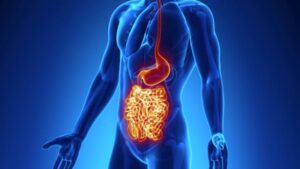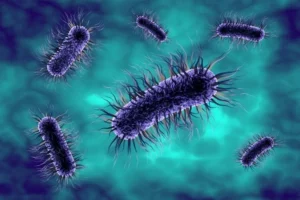
Welcome. I did a blog about the health benefits of probiotics where I discussed the research on certain probiotic bacterial strains and their effect on IBS, ulcerative colitis, and pouchitis. Is one probiotic brand as good as the next? Unlikely, only a few strains out of hundreds of possible bacterial strains have been proven in clinical studies to offer some health benefits to humans. This is also the reason why there are such conflicting results between studies using different probiotic strains. The health benefits seem to come from a select few bacterial strains. Research has consistently shown the benefits of a handful of probiotic strains. These are the strains I will be discussing.
Other important factors to consider when buying a probiotic are: will it survive acid in the stomach; is the bacterial count in the probiotic high enough to be beneficial; will it open in the small intestine; and is the probiotic even alive when you purchase it? These are all very good questions. I will go over this and much more in this blog!
Which bacterial strains have been shown to have health benefits?
The bacterial strains shown to consistently offer health benefits are the ones in the VLS#3 probiotic. The VLS#3 probiotic mixture has been studied more than any other probiotic strain. If they were not so expensive (about $80 a month and not covered by insurance), I would just tell you to buy those, and that would be that. If you are like me, spending $80 a month on probiotics is a bit much. Luckily, there are other probiotics, although not as extensively studied, that contain most of the bacterial strains that are in the VLS#3 probiotic.
The following is a list of the bacterial strains found in VLS#3: Bifidobacterium breve, Bifidobacterium longum, Bifidobacterium infantis, Lactobacillus acidophilus, Lactobacillus plantarum, Lactobacillus paracasei, Lactobacillus bulgaricus, and Streptococcus thermophilus. As you can see, the dominant bacterial strains in this mixture are Bifieobacterium and Lactobacillus. These are the two strands that seem to be lower in those with irritable bowel syndrome. So, the logical next step would be to find other probiotics that contain most of these bacterial strains.
Probiotic mixtures similar to VLS#3
I have found a few mixtures that contain most, although not all, of the bacterial strains found in VLS#3. As I have mentioned numerous times, I do not want to be thought of as promoting one store or one brand over another, but for this blog, I have to be very specific about the probiotic brand. I take the following probiotics: Healthy Origins Probiotic 30 Billion CFU’s, Veggie Capsules. I have bought these in the past—Hyperbiotics Pro-15. Both of these products have similar strains to VLS#3 and similar amounts of CFU’s (colony-forming units—a measure of the amount of bacteria per capsule). Both of these products are pretty similar in price. Pick whichever one you like more. If you find other probiotics with similar strains to VLS#3, email me, and I will add them to this section.
Storing probiotics
Both of the probiotics I mentioned claim that their products will stay alive at room temperature for about a year. VLS#3 requires the probiotic to be refrigerated. I err on the side of caution, so I take enough capsules to last for a week, put them in a different bottle next to my nightstand, and keep the remaining probiotic capsules in my fridge. I fill the bottle next to my bed every week. Even if refrigeration is not necessary, it will still help keep the bacteria viable.
Are the probiotics alive at the time of purchase?
This is a very important consideration. What good is taking dead bacteria? Most probiotic companies guarantee that their bacterial strains are alive at manufacturing, but not when you buy them. You have to do some research to make sure the bacteria are alive when you get them. It is really hard to find a company that guarantees their product to be alive at the time of purchase. Both of the ones I mentioned seem to be alive atthe time of purchase, but I can’t say for sure. I have indirect evidence that both are alive because of how bloated I became and how my stool consistency changed during the first three weeks I started taking both probiotics (this is normal while your intestine gets used to the new bacteria). If they were dead before reaching the intestine, I do not think I would have gotten the side effects that I did.
Finding probiotics that make it through the stomach
After you swallow the probiotic, its first stop (and possibly last) is your stomach. When we eat food, our brain senses the food in the stomach and sends signals to our organs to release hydrochloric acid (an extremely potent acid) into our stomach to digest the food. Most probiotics will be destroyed in the stomach unless they have been altered to survive digestion. Both of the probiotics I mentioned claim to survive stomach digestion.
How to take probiotics
Even if the probiotic company claims to have a special formula that survives the acid in the stomach, we should try to minimize its exposure anyway. One way to do this is to take the probiotic on an empty stomach. Since the probiotics are so small, it is unlikely that they will trigger the secretion of acid into the stomach, as our brain probably does not register one tiny pill as food. If no acid is released, it does not matter if the probiotic is capable of surviving the acid or not. What is an empty stomach? Two hours before you eat or two hours after you eat seems to be the accepted answer. I actually set my alarm to three hours after I fall asleep (usually 4 AM!) and wake up to take the probiotic on my nightstand and then go back to bed.
Probiotic bacteria do not last long.
Unfortunately, studies have shown that we must take our probiotics daily to maintain the probiotic strains in the gut microbiota. A few days to weeks after stopping probiotics, the gut microflora usually returns to its pre-probiotic environment. Because of this, if you want to maintain the health benefits of probiotics, you must take them daily.
How many CFU (colony-forming units) do I need to take to get all of the health benefits?
CFU’s are used by companies to tell how much bacteria is in each capsule. VLS#3 contains about 200 billion live bacteria. This is a lot of bacteria, especially compared to other brands. The Healthy Origins Probiotic 30 Billion CFU’s contains…surprise…30 billion CFU’s! The Hyperbiotic Pro-15 contains 75 billion CFU’s. It seems like hyperbiotics are the better deal. I take two healthy origin capsules each night, so that is 60 billion CFU’s. What little research has been completed shows that more is usually better—at least in VLS#3. High CFU’s were associated with better health-related outcomes than lower CFU’s. Even so, the type of bacterial strain is far more important. 30 billion CFU’s are probably adequate, but until more tests are conducted, I cannot say yes for certain.
What to expect
As I mentioned, it took my body a few weeks to get adjusted to the bacteria. I had gas, bloating, and altered bowel movements for the first three weeks. I was considering stopping until I read that this is common and usually goes away within a month. To understand why we get side effects, just think of taking antibiotics. Antibiotics alter your gut microbiota by killing most bacteria. The destruction of the bacteria can cause diarrhea, gas, and bloating. Probiotics do not destroy our gut bacteria, but they do change the dominant strains. As some strains are replaced and die and the environment is changing for the better, it is not unusual to experience side effects similar to those of antibiotics, as both change the landscape of our gut microbiota. Stick with it even if you have increased gas. During studies, almost no one dropped out because of side effects. If you want to reduce side effects, start off with a lower amount, then slowly increase as your body gets adjusted.
Discussion
I went through all of the major points: type of strain, amount, when to take them, storing them, and what to expect. Basically, we want a proven probiotic strain that is alive, contains ample CFU’s, and makes it to the small intestine (second stop after the stomach). The stomach is nearly void of bacteria (most likely because the acid continuously kills them), so if the probiotics end up opening in here, they are useless.
I have been taking probiotics for about a month now. The first three weeks were uncomfortable. Between the increased gas and increased amounts of bowel movements, I thought I was having an adverse reaction to the probiotics. But they seem to be working now. I no longer have side effects. My bowel movements are more regular, I have less gas than I did before I started taking them, and for the first time in years, my bowel movements come out solid (I have diarrhea predominant IBS and never realized that it was unusual to have only diarrhea). I am sure I have thoroughly grossed you out by now, so I will stop here. Please email me with any questions about this topic or to show me the probiotics you take. Adios!





Interesting post…as always….hope to read more from you soon !
Hey Bernal. If you try out any of the probiotics I mentioned tell me if they seem to help in any way. Even if they do not produce noticable effects they may promote growth of beneficial bacteria in your colon. Thanks for continuing to read my blogs. School is over in two weeks so I will be back to posting every other week! If you have any ideas for future blogs let me know!
As you know, I started to take probiotics not too long ago and they have helped me a lot. I actually take the ones from the main picture 🙂 Thanks for your input on this.
I actually recently switched from the ones at the end to the ones in the beginning of the blog. After doing more research I believe that the first probiotic is more effective, stays alive longer and survives digestion better than the probiotic at the end. I have only been on it for four days now so I cannot say if it helps more than the previous one but I will let you know in a few weeks!